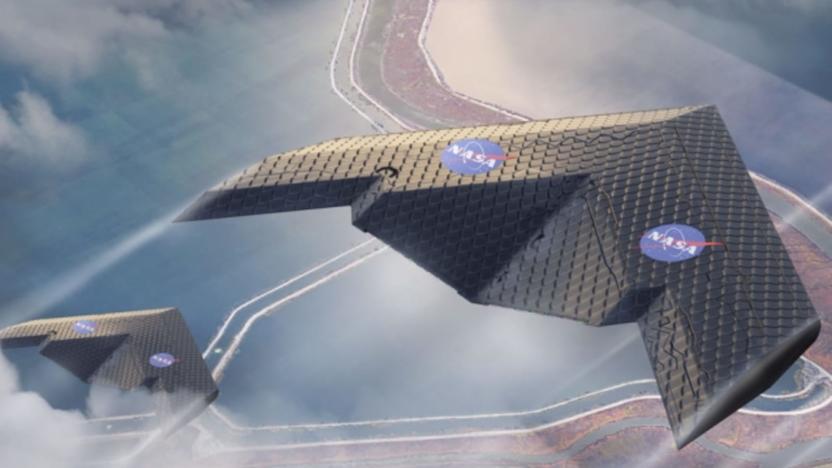aeronautics
Latest

Researchers designed a shape-shifting airplane wing
If you've had a window seat next to the wing of an airplane, you've probably watched as flaps on the wing engage and disengage as a plane takes off and lands. That's because in each phase of flight -- take off, landing, cruising and maneuvering -- the ideal wing parameters vary. Until now, we've made do by modifying rigid wings with hinged surfaces. But imagine if the entire wing could change shape -- that's what researchers led by NASA and MIT are working towards.

Gogo's next generation in-flight WiFi launches next year
Gogo's new 2Ku in-flight WiFi might not be as fast as your home internet connection, but it gets the job done -- and a lot faster than current in-flight connectivity. But how much will it cost? When will consumers get to use it? And of course, just how secure is the satellite internet service? For the answers to those questions and more, I sat down at a brief roundtable interview with CEO Michael Small and Vice President of Product Management Blane Boynton at the company's Chicago headquarters.

In Mars One we trust
Mars One promises to send humans on a one-way trip to the red planet, with the intent to colonize, by 2027. Once the first four people leave Earth for Mars, there's no turning back, no panic button, no chance to return home. This aspect of the trip isn't just for drama -- it's a core tenet of Mars One's technical feasibility. CEO Bas Lansdorp believes that it's possible, using current technology, to land and sustain human life on Mars. But the systems that would power a human settlement on an alien planet are ridiculously complex. They're so complicated that Lansdorp isn't yet sure what they will actually be. This lack of ready research has mired Mars One in controversy, thanks to a recent one-two credibility punch: First, a 2014 research paper from the Massachusetts Institute of Technology concludes that the program is not realistic. Second, a series of articles for Matter magazine calls into question the feasibility of Mars One financially, scientifically and ethically. Still, Lansdorp promises to send humans to live on Mars, but he can't yet say how. He wants the world to trust him.

NASA says lunar caves could provide living spaces for future astronauts
It turns out that the Moon could be habitable. Sort of. NASA writes that some of the holes in our moon's surface might actually be caves where future astronauts could hole up and guard themselves from radiation, micrometeorites and massive temperature changes when day turns to night, aiding future exploration. The aeronautics outfit says that these caves could be the result of a few different actions, including sub-surface lava draining away from an area and vibrations causing the roofs of resultant voids to collapse. The only way to know for sure, though, is to physically check them out -- there's only so much that photos from NASA's Lunar Reconnaissance Orbiter can tell us. Who knows, maybe once astronauts start delving below the lunar surface they'll find a wizard or two. [Image credit: Associated Press]

Supersonic Green Machine sends greetings from the future
While many of us are busy debating the relative merits of pocket-sized technology, NASA is mulling over ideas on a much grander scale. Submitted as part of the Administration's research into advanced aeronautics, the above Lockheed Martin-designed aircraft is just one vision of how air travel might be conducted in the future. It's a supersonic jet employing an inverted-V engine-under-wing configuration, which apparently helps to significantly reduce the resultant sonic boom. Other than that, we're only told that "other revolutionary technologies" will provide for the achievement of range, payload and environmental goals. So that snazzy paintjob wasn't just for show, after all -- who'd have guessed?


